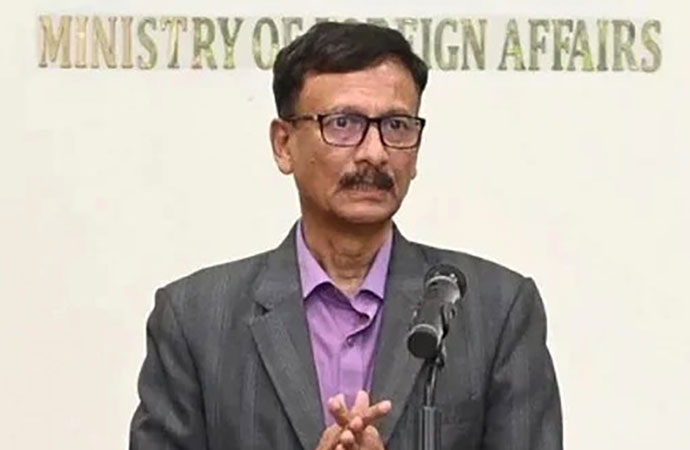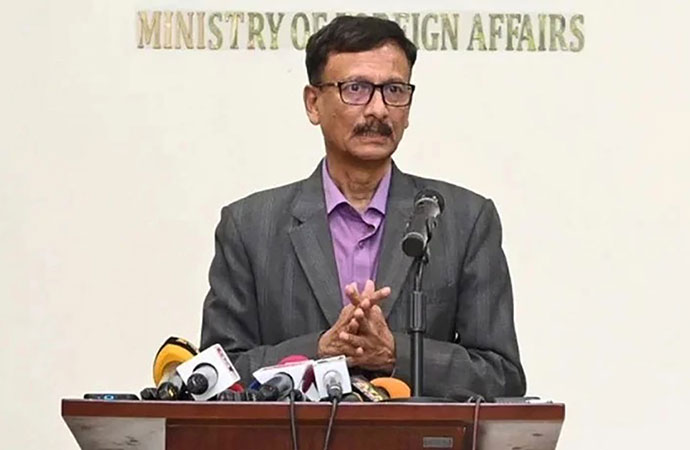Global

Bangladesh is located on the tectonically active Himalayan orogenic belt, which has developed through collision with the Indian, Arabian and Eurasian plates over the last 30-40 million years.
Experts have long predicted that a massive earthquake of 8.2 to 9.0 magnitude is imminent, much like the Great Bengal Earthquake of 1897.
A 2016 study by a team of researchers, led by Dr Michael Steckler from Columbia University, titled "Locked and loading 'megathrust' linked to active subduction beneath the Indo-Burman Ranges", found a new megathrust fault line that runs through Myanmar, Bangladesh and India.
"Dhaka, with a population of 11 million, is the second densest city in the world with very few earthquake-resistant buildings", the report further stated.
With development on sand-filled land in recent times, Dhaka has been consistently named one of the riskiest cities in the world in terms of the potential damage were an earthquake to hit.
Experts pointed out that this newly discovered 'megathrust' fault happens when the earth's tectonic plates collide with each other and when one of the plates try to move under the other. They are known to produce some of the biggest earthquakes, like the one in 2011 in Japan and the 2004 Banda Aceh earthquake, both of which created massive tsunamis.
Professor Mehedi Ahmed Ansary of the Civil Engineering Department at Bangladesh University of Engineering and Technology (BUET) has said there is a very high chance of a massive earthquake in Bangladesh like the one in 1897, which was estimated to be of magnitude 8 on the Richter scale.
Md Momenul Islam, Meteorologist of Bangladesh Meteorological Department (BMD), told Dhaka Courier that the country' first seismic observatory was set up at Ambagan in Chattogram in 1953. Later in 1985, a modified seismic observatory was established.
"In the year 2007, four digital seismic observatories were set up in Dhaka, Chattogram, Sylhet and Rangpur. Besides, in 2015, observatories were also established in Mymensingh, Rajshahi, Cox's Bazar, Cumilla, Khulna and Tetulia stations," he mentioned.
"The 10 digital observatories will be able to monitor across the country round-the-clock (24 hours)," the Met official said, adding that "Magnitude 6+ earthquake that occurs anywhere can be monitored from here. Besides, local quake of any intensity can be monitored from the digital observatories."
Referring to tremors that jolted Nepal in 2015, he mentioned that "due to the tremor there was impact in Bangladesh, many buildings cracked".
To cope with the future tremor situation, plan is underway to set up three more seismic digital observatories, he said further.
Talking about monitoring Tsunami the Met expert said that an early warning system has been set up in India, Indonesia and Australia for the 26 Indian Ocean littoral states.
"Bangladesh would be able to get proper information about Tsunami. If any Tsunami take place, then the early warning system inform us immediately through SMS. Now BMD can directly enter the system to get the latest information," he further said, adding that there is also provision in which meteorology-related data are exchanged with World Meteorological Organisation (WMO). Tsunami can occur after 7+ earthquake.
DMB awareness programme
Disaster Management Bureau (DMB) carries out awareness programmes to educate people of all strata about the various aspects of natural calamities including flood, drought, tornado as well as earthquake.
The DMB holds workshops in schools in various parts of the country. Seminars and lectures are held in the educational institutions to orient the learners about the dangers of the natural calamities and awareness on rescue during any disasters. World Bank funds the school awareness programme.
In recent time, more people have been killed by earthquakes than those by any other form of weather hazard. Bangladesh is one of the largest deltas of the world. Tectonically, Bangladesh has been affected by earthquake disasters since ancient times.
An earthquake is the result of a sudden release of energy in the earth's crust that creates seismic waves. The seismicity or seismic activity of an area refers to the frequency, type and size of earthquakes experienced over a period of time. Earthquakes are measured by Richter magnitude (ML) scale and moment magnitude (MW) scale. Earthquakes are classified by the depth at which they occur.
Bangladesh and north-eastern India states are seismically active and earthquake risks are increasingly seen as a major problem. During 1918-2007, twelve earthquakes with magnitude M ≥ 7 have affected parts of Bangladesh.
Major earthquake in Bangladesh the last 100 years including date, magnitude, and epicenter.
8 July, 1918 Srimangal earthquake, Magnitude 7.3 Bangladesh-Tripura border
9 September, 1923 Meghalaya earthquake M 7.1 Bangladesh-India border (Meghalaya)
2 September, 1930 Dubri earthquake M 7.1 Dabigiri
6 March, 1933 India Bangladesh earthquake M 7.6 India-Bangladesh border
15 January, 1934 Bihar Nepal earthquake M 8.3, Bihar-Nepal border
11 February, 1936 Bihar earthquake M 7.5, North Bihar
16 August, 1938 Manipur Earthquake M 7.2 Manipur, near Bangladesh
23 October, 1943 Assam earthquake M 7.2 Hojai Assam
21 March, 1954 Manipur-Myanmar earthquake M 7.4, across Manipur-Myanmar border
21 November, 1997 Bandarban earthquake M 7.1 Mizoram-Maynmar border
26 December, 2004 Cox's Bazar earthquake M 7.0 Bonda Aceh, Indonesia
12 September, 2007 Tsunami due earthquake (Cox's Bazar) M 8.5 Bengkula, Sumatra

























Leave a Comment
Recent Posts
Remembering Kalidas Karmakar ( ...
The art world remembers Kalidas Karmakar, a visionary whose creativity ...
An Evening with Shishir Bhatta ...
Cosmos Art Echo, the artist talk initiative of Gallery Cosmos and Cosm ...
Myanmar denies genocide, calls Rohingya crackdown co ..
Yes, of course
Earth’s average temperature last year hovered among ..
Bangladesh and Singapore: A Tale of Two Nations